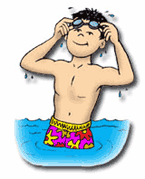- Find a Doctor
-
For Parents
- Before Your Visit
- During Your Visit
- After Your Visit
- More Resources for Parents
Patient & Visitor Resources -
Services
- Locations
-
About Us
- About Childrens
- Find it Fast
- Additional Resources
Find it FastAdditional Resources - MyCHP
ALERT:
There is construction in and around UPMC Children’s Hospital that is affecting the traffic flow – please allow for extra time traveling into the hospital.
- Find a Doctor
- For Parents
-
Services
-
Frequently Searched Services
- Asthma Center
- Brain Care Institute (Neurology & Neurosurgery)
- Cancer
- UPMC Children's Express Care
- Ear, Nose, & Throat (ENT)
- Emergency Medicine
- Endocrinology
- Gastroenterology
- Heart Institute
- Genetic & Genomic Medicine
- Infectious Diseases
- Nephrology
- Newborn Medicine
- Primary Care
- Pulmonary Medicine
- Rheumatology
- Surgery
- Transplant Programs
- See All Services
-
Frequently Searched Services
- Locations
- About Us
- MyCHP
- I Want To
- More Links









 Every year in the United States there are an estimated 4,000 fatal unintentional drownings and 8,000 nonfatal drownings according to the Centers for Disease Control and Prevention. In fact, drowning is the single leading cause of death for children ages 1-4 and the second leading cause of unintentional injury death for children up to age 14.
Every year in the United States there are an estimated 4,000 fatal unintentional drownings and 8,000 nonfatal drownings according to the Centers for Disease Control and Prevention. In fact, drowning is the single leading cause of death for children ages 1-4 and the second leading cause of unintentional injury death for children up to age 14.